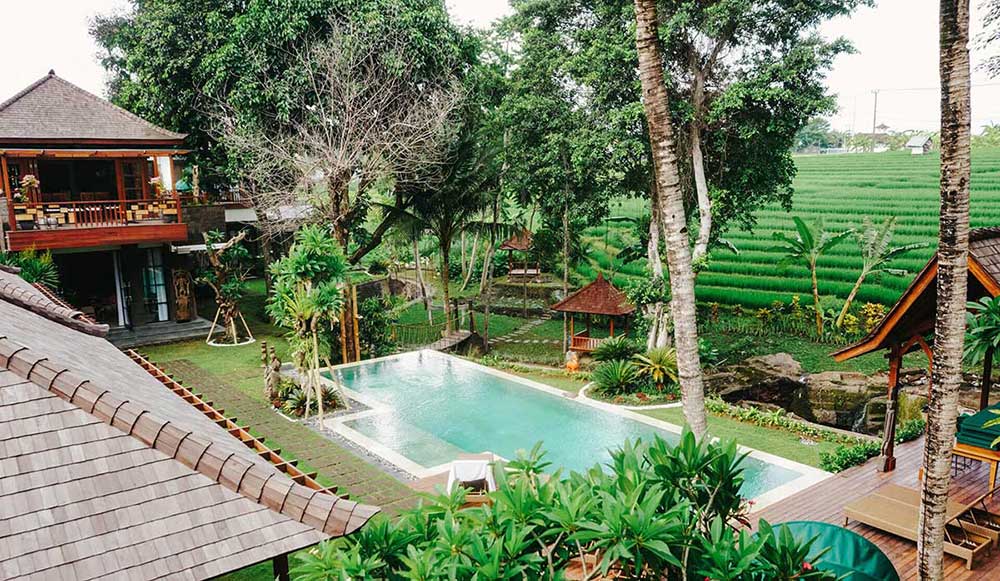
Bali Architecture Integrated with Modern Style image source from www.paripadivilla.com. Design and Build by Cipta Bali Architect
Indonesia’s unique cultural richness in harmony with nature shapes the diversity of amazingly beautiful, comfortable and functional architecture. This goes similarly like the architecture of Bali. As an area in Indonesia that is already well known to the world, Balinese architecture is a representation of the richness and distinctiveness of Indonesian architecture that often combined with modern style. Then how do you combine Balinese architecture with modern style for your house?
Bali Architecture Philosophy
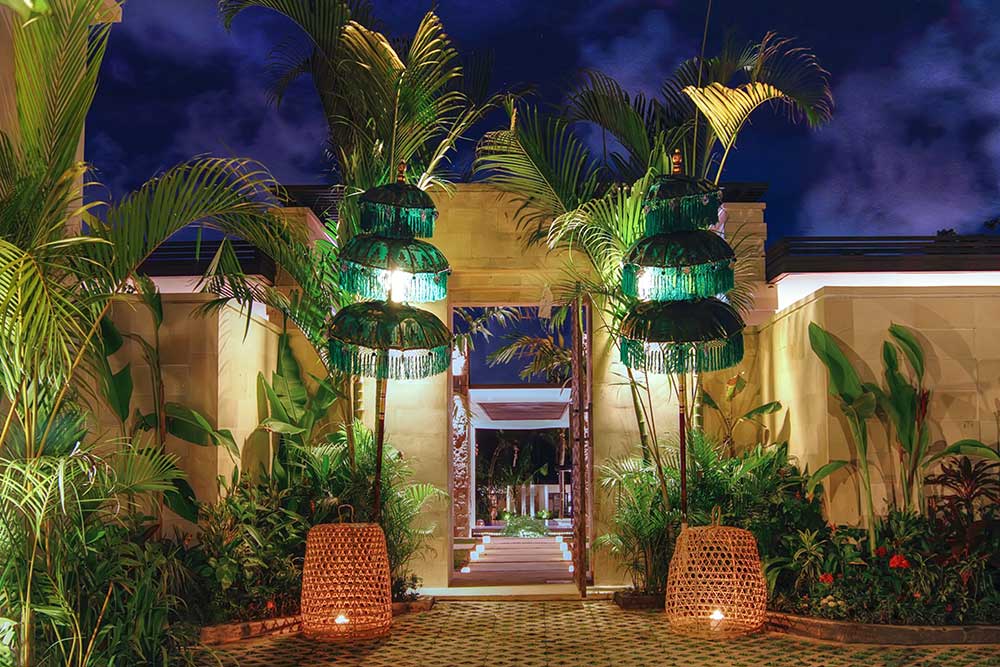
Bali Architecture Integrated with Modern Style image source from Villa Mona. Design and Build by Cipta Bali Architect
Bali architecture is strongly influenced by Hindu elements, starting from the organization of space from the beginning of the gate to the layout of the space, as well as the details of the carvings. Broadly speaking, Balinese architecture is designed with 7 philosophies, namely:
- Tri Hata Karana: creates harmony and balance between the 3 elements of life – human (atma), nature (angga), and gods (khaya).
- Tri Mandala: space and zoning rules
- Sanga Mandala: a set of rules for spatial and zoning based on direction
- Tri Angga: concepts or hierarchies between different realms
- Tri Loka: similar to Tri Angga but with a different nature
- Asta Kosala Kosali: 8 architectural design guidelines about symbols, temples, stages, and units of measurement
- Arga Segara: sacred axis between mountains and the sea
Characteristics of Bali Architecture
- Harmony with Nature
The concept of harmonization with nature becomes the basic character and character of Balinese architecture. This harmony is strengthened through the use of natural stone materials, wood carvings and bamboo. This natural material is expected to create harmony between humans and the environment, between humans, and human closeness with the Creator. Harmony with this nature can be displayed with natural stone as the floor of the sitting area, banana tree fan as a point of interest in the rear garden, and the use of a little plant to show the impression of simplicity and minimalist modern concepts.The number and rows of wooden chairs are intentionally designed to show the harmony of togetherness with fellow humans, who both face the garden to admire the beauty of the garden and the sky created by God. - Carving on Stone and Wood
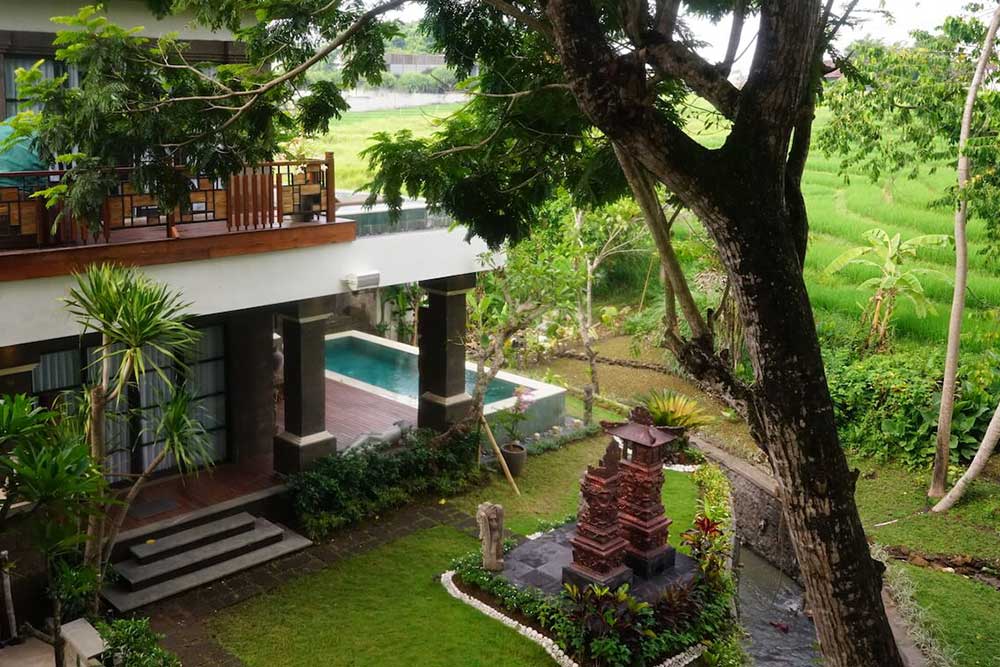
Bali Architecture Integrated with Modern Style image source from www.paripadivilla.com. Design and Build by Cipta Bali Architect
Balinese Carving has the influence from Majapahit Hinduism. Initially this carving was placed in a place of worship, but over time, the unique sculpture became an architectural style that is identical to Bali.
- Neat Space Zoning
The balance of spatial distribution is obtained from the application of Tri Angga’s philosophy with three levels, namely the Utama, Madya, and Nista.The application of Tri Angga in the modern concept has shifted into public, semi-public and private spaces. This concept can be applied by making the yard as a public space, the terrace between the courtyard and the bedroom as a semi-public area with long wooden chairs at the foot of the bed as a barrier to semi-public areas, and beds in private areas.In addition, the ceiling with wooden frame as a characteristic of Balinese architecture blends harmoniously with the modern open-plan style while still showing a neat zoning between the living room and dining room. Not only zoning a neat space in the interior, starting from the gate, this neatness is obvious. Road as a public area, a staircase that becomes a semi-public area, and a gate as a sign of entering a more private space.
Main Aspects of Balinese Architecture
- Excellent Ventilation System
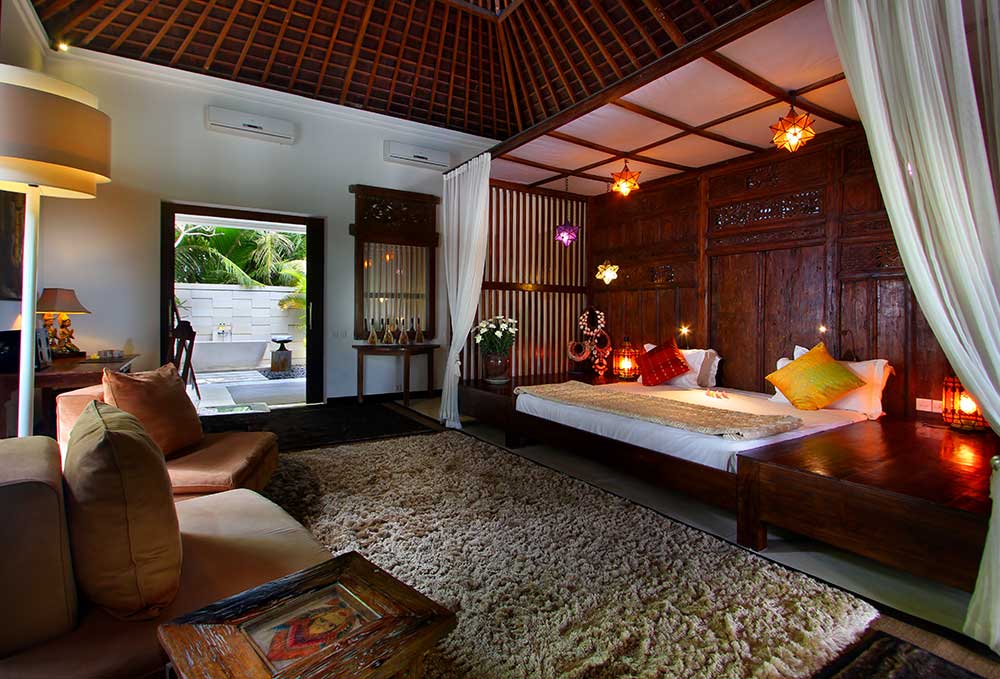
Bali Architecture Integrated with Modern Style image source from Mokenbo Villa. Design and Build by Cipta Bali Architect
Balinese architecture uses large windows or space between the roof and walls of the building for good air circulation. For example by designing a bedroom with a wall filled with carvings on the head of the bed has a large window overlooking a small garden. The bathroom as a private space that requires a good ventilation system, intentionally designed without a roof with bamboo as its protective gate. Natural stone is used so that the floor is not slippery, as well as a symbol of harmony with the tropical nature.
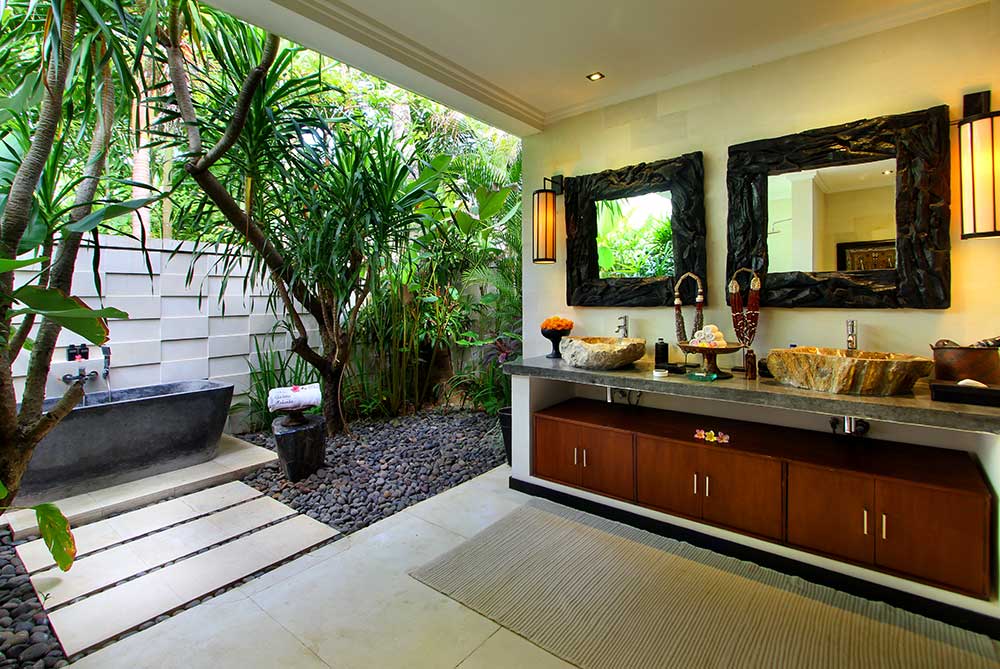
Bali Architecture Integrated with Modern Style image source from Mokenbo Villa. Design and Build by Cipta Bali Architect
- Sturdy Foundation
Tri Loka’s philosophy presupposes the home as a human body with feet as a strong foundation. Even tropical contemporary modern style can clearly show the structure of buildings with Balinese architecture. Structural poles exposed are symbolic of human bones that strengthen the building. The head is manifested in the form of a ceiling that attaches to the roof with the exposure of the wooden rafters and batten as strength and aesthetic elements that show the beauty of simplicity. - Spacious Yard
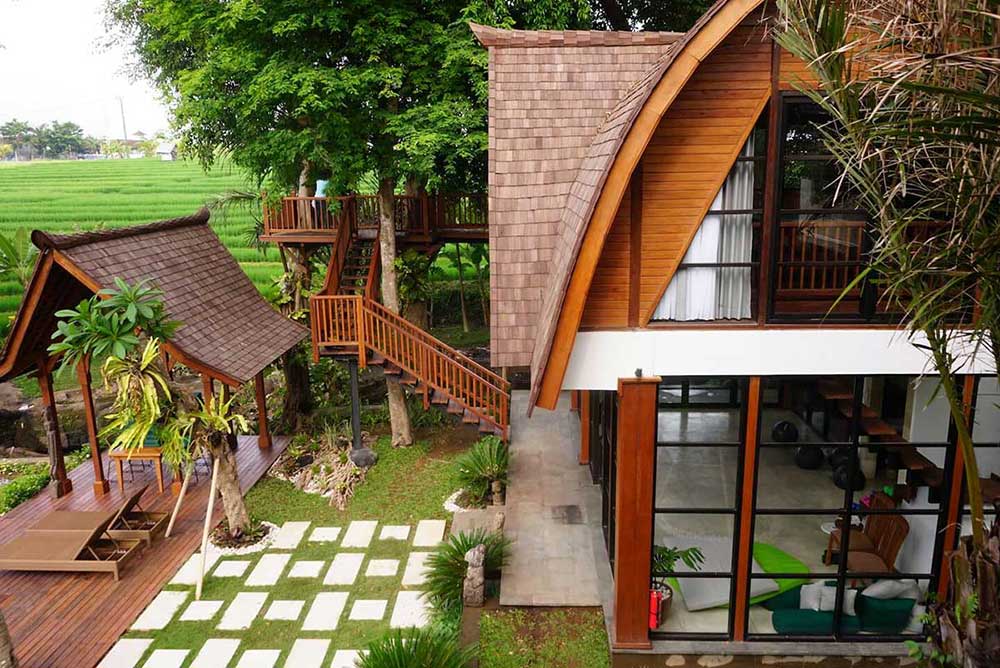
Bali Architecture Integrated with Modern Style image source from www.paripadivilla.com. Design and Build by Cipta Bali Architect
Harmonization with nature requires a yard that is large enough to be able to communicate with the natural surroundings. Trees with unique trunks blend beautifully with concrete road patterns interspersed with grass and huts along with a dumb bale of wood.
- Wall Guard
In Balinese architecture, the wall has a more spiritual role than its main function for security and privacy from the outside. Spiritually, a high wall is believed to be able to ward off black magic and evil spirits. The shape of the box from natural stone decorated with palm trees, banana trees, and rows of decorative bamboo on the wall of the entrance can be tried in combining the architecture of a Balinese house with a modern style.Before entering the main door, the concrete block road pattern was deliberately designed to be in the middle of a pond with a philosophy of water that cleansed all evil elements, and flanked by natural stone walls as its guards.Actually, the aim of traditional and modern architectural styles is to provide functional comfort for human users. Both also apply the beauty of architecture with the beauty of elements that function optimally. So, it is not difficult to combine Balinese architecture or other traditional architecture with a modern style. Again, the architect’s knowledge, expertise and dedication can answer all challenges to integrate various architectural styles.
Do you want to build a modern and minimalist house? Contact us now for more information.





